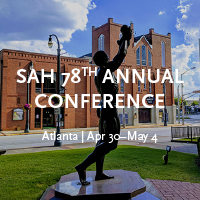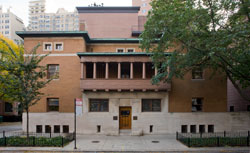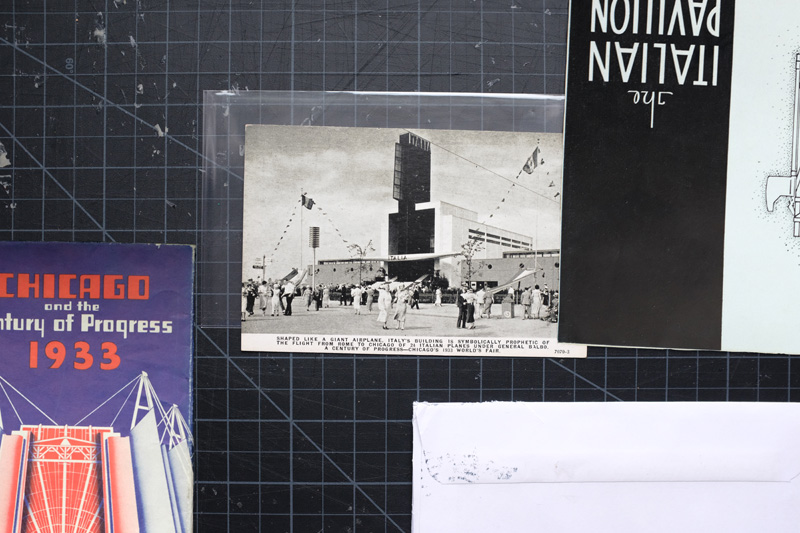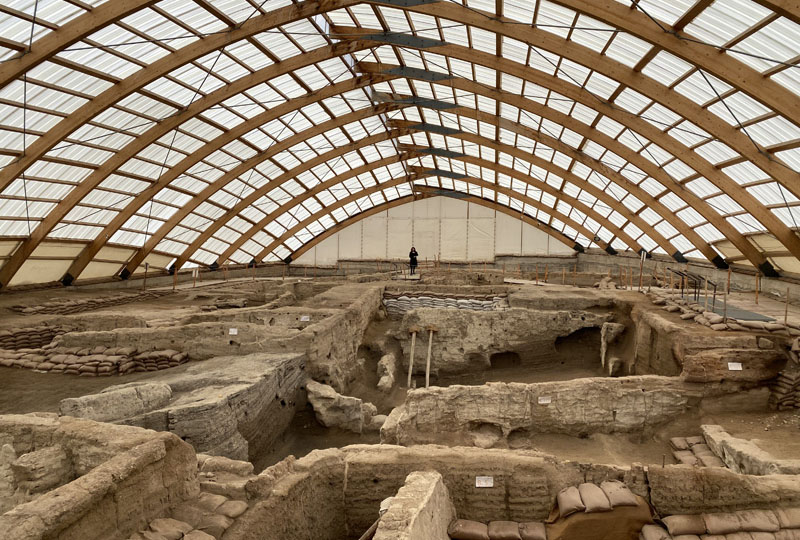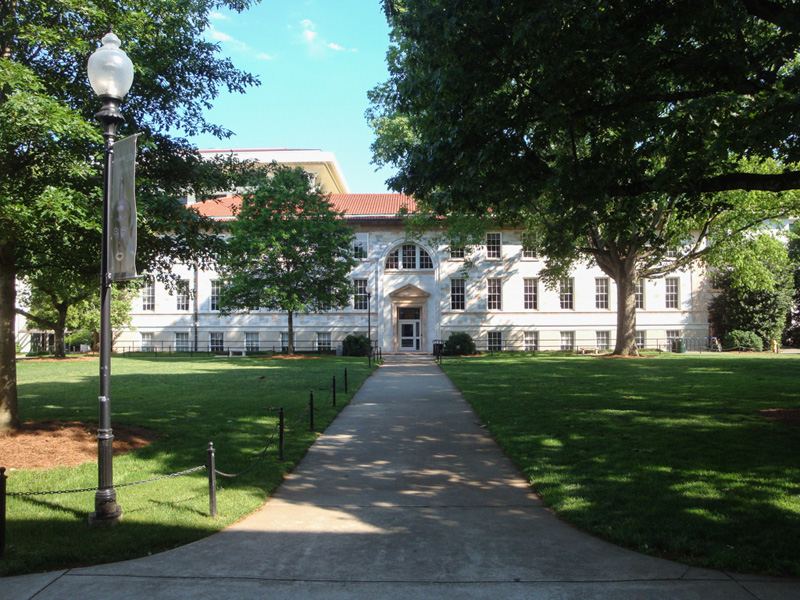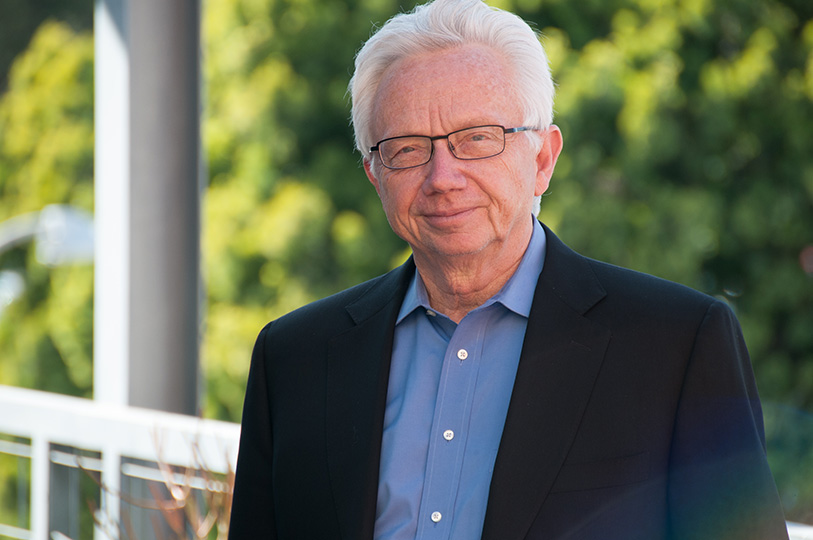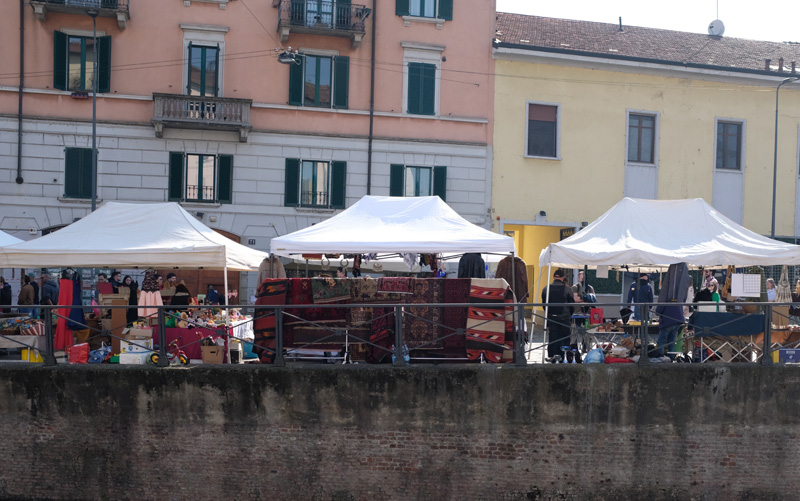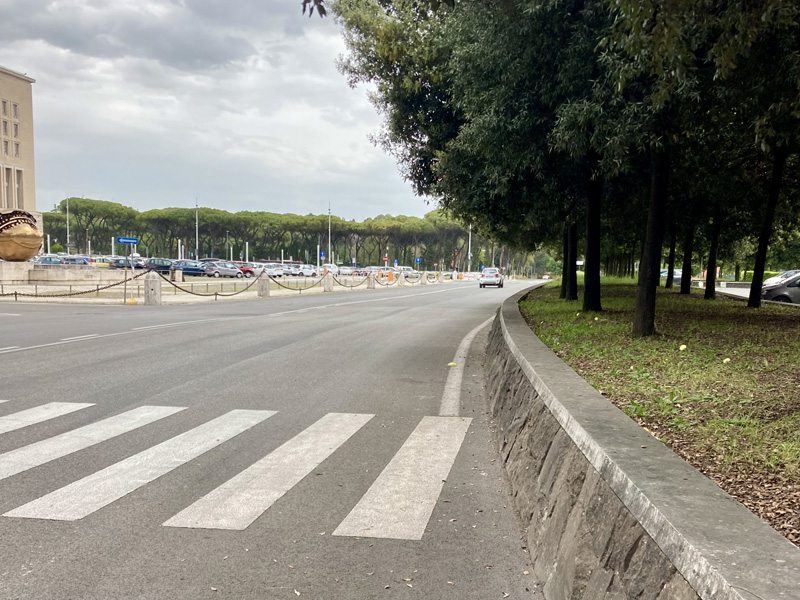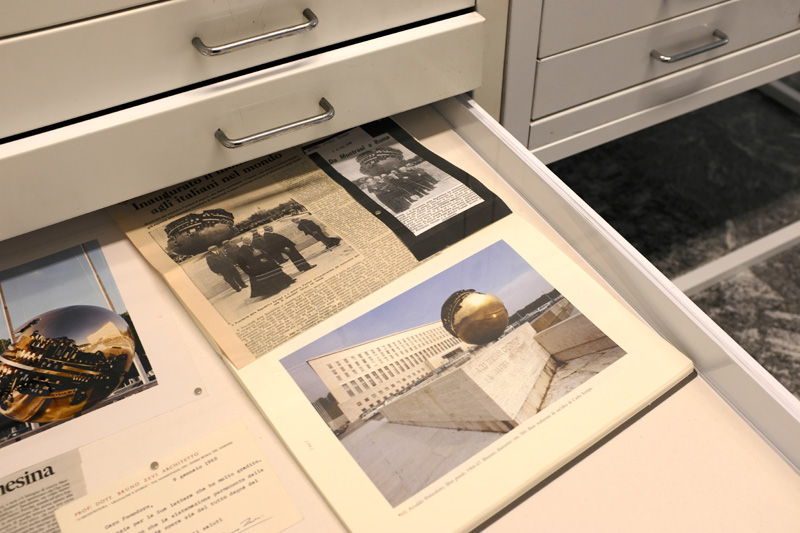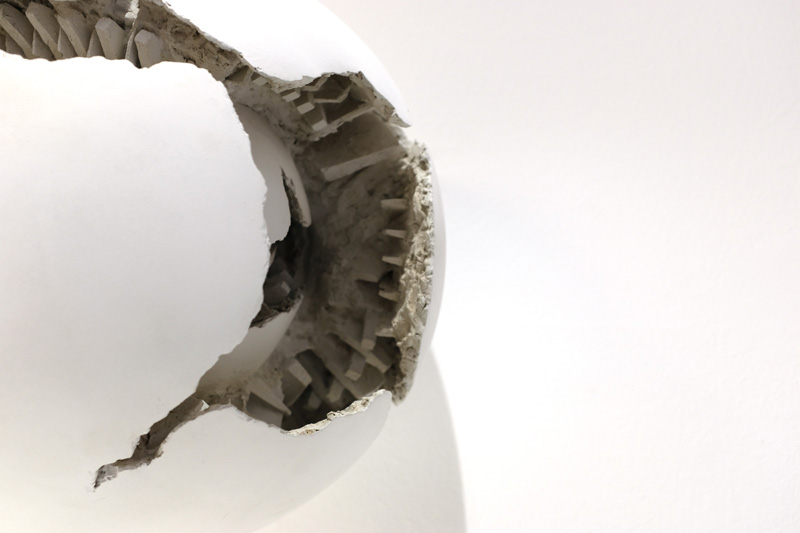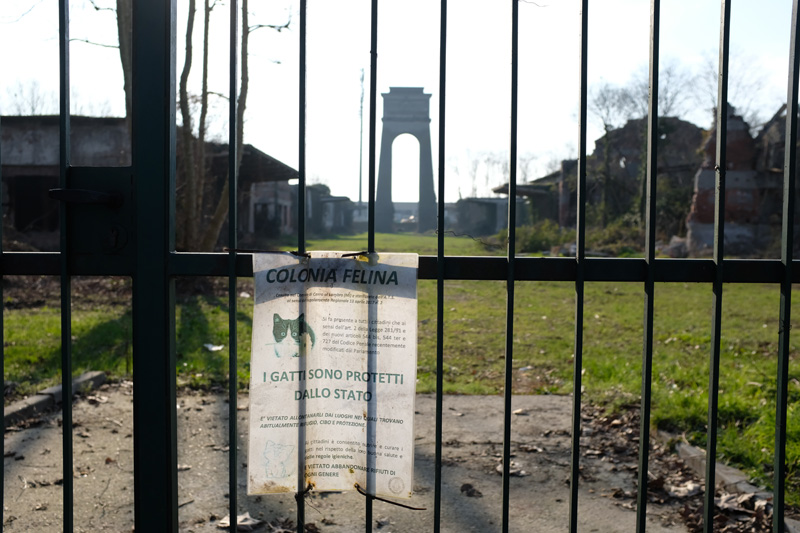-
Membership
Membership
Anyone with an interest in the history of the built environment is welcome to join the Society of Architectural Historians -
Conferences
Conferences
SAH Annual International Conferences bring members together for scholarly exchange and networking -
Publications
Publications
Through print and digital publications, SAH documents the history of the built environment and disseminates scholarshipLatest Issue:
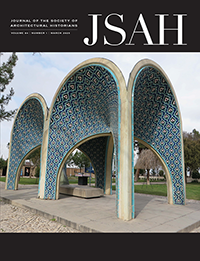
-
Programs
Programs
SAH promotes meaningful engagement with the history of the built environment through its programsMember Programs
-
Jobs & Opportunities
Jobs & Opportunities
SAH provides resources, fellowships, and grants to help further your career and professional life -
Support
Support
We invite you to support the educational mission of SAH by making a gift, becoming a member, or volunteering -
About
About
SAH promotes the study, interpretation, and conservation of the built environment worldwide for the benefit of all
SAHARA Highlights: Justice
Jan 23, 2025
by
SAHARA Co-Editors Jacqueline Spafford, Jeannine Keefer and Associate Editor Meral Ekincioglu
It seems timely to look at the architecture of justice, with the rule of law under threat in many parts of the world. From the imposing facades of 19th and early 20th century high court buildings, to the elegance of Niemeyer and Le Corbusier’s Palaces of Justice, to the simplicity of the personifications of Justice, these selections from the SAHARA collections illustrate the breadth of content, and the research interests of our members.
1. Oscar Niemeyer, Tribunal Supremo Federal (Federal Supreme Court), Brasilia, Brazil, 1972. Photograph by Doriane Meyer, 2018.
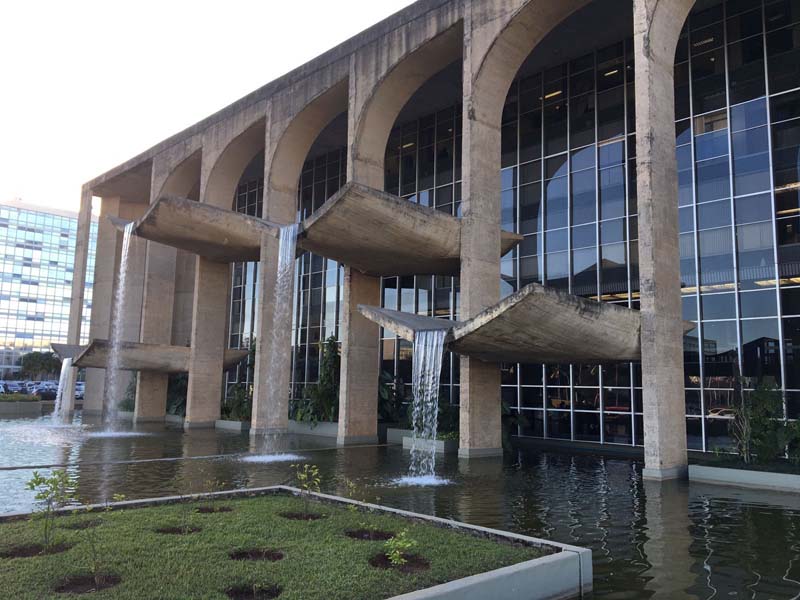
2. Jeanne Gang / Gang Architects, Arcus Center for Social Justice, Kalamazoo College, Kalamazoo, Michigan, 2014. Photograph by Dell Upton, 2015.
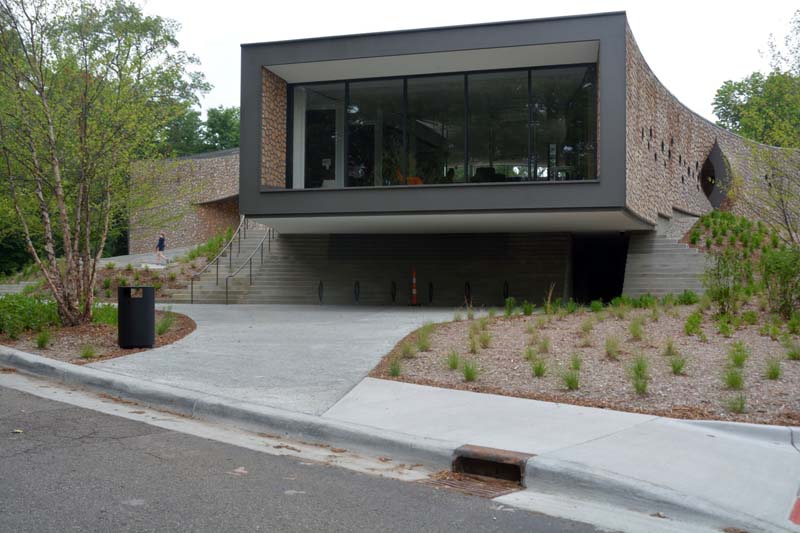
3. George Edmund Street et al, Royal Courts of Justice, London, England, 1868-82. A prime example of the decorative English Gothic style. Photograph by Richard Longstreth.
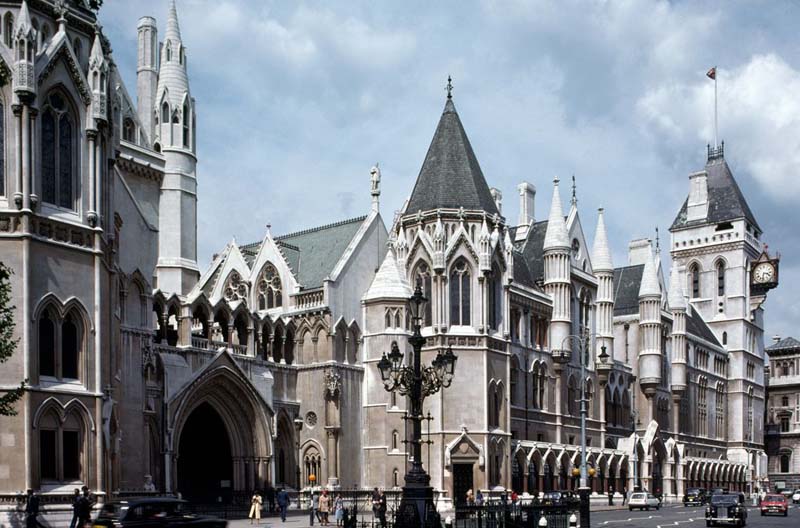
4. Palace of Justice, Damascus, Syria, 1850 (last renovation). Partially built on Ottoman-era structures, it housed the Ottoman army. Photograph by Nasser Rabbat.
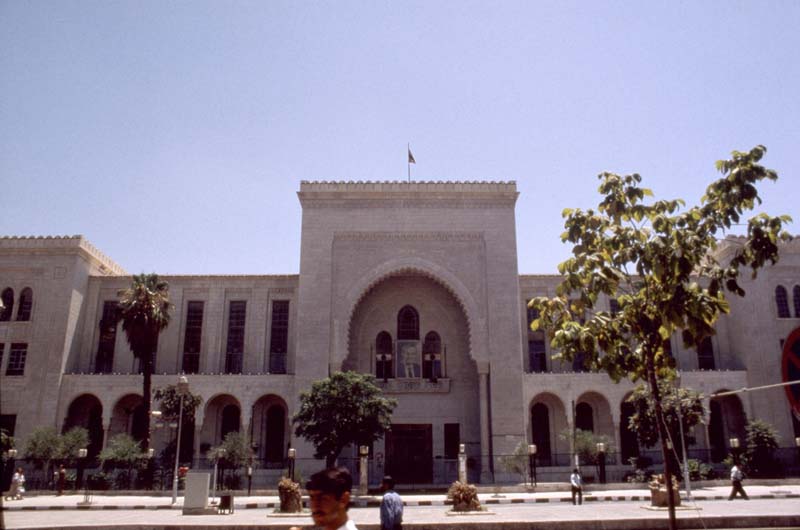
5. William LaBarthe Steel, with Purcell and Elmslie, Woodbury County Courthouse, Sioux City, Iowa, 1916-18. The interior of the Prairie-style building is decorated with murals by John Warner Norton; the one shown here is a tribute to the fallen soldiers of WWI. Photograph by Jean France, 2000.
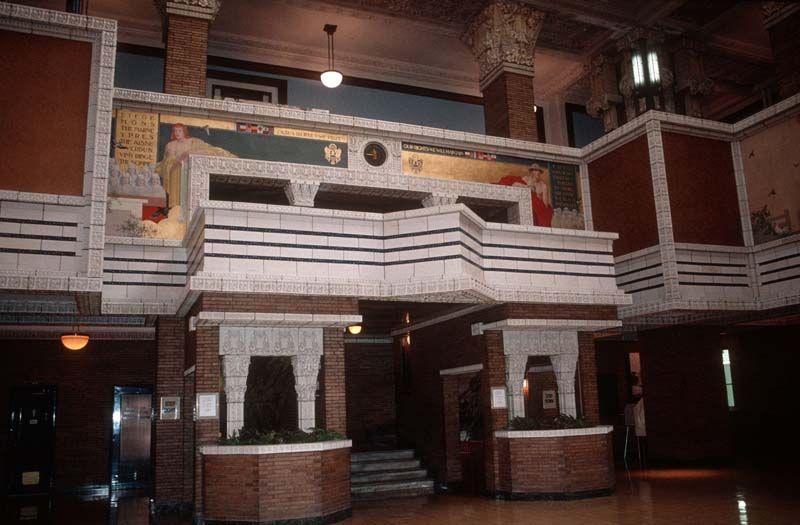
6. Le Corbusier, High Court of Justice, Chandigarh, India, 1952-56. Photograph by G.E. Kidder Smith.
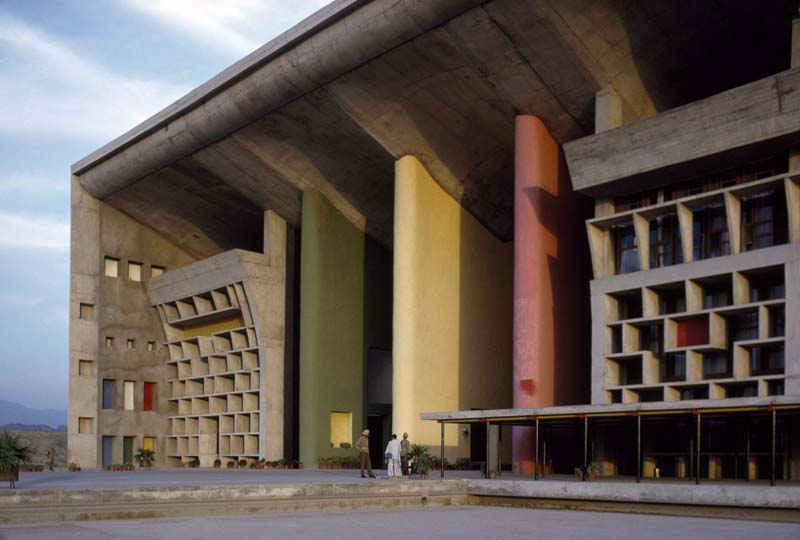
7. Louis-Auguste Amos, Charles Jewett Saxe, and Ernest Cormier, Édifice Ernest-Cormier, Montreal, Quebec, 1920-26. Photograph by Aliki Economides, 2010.
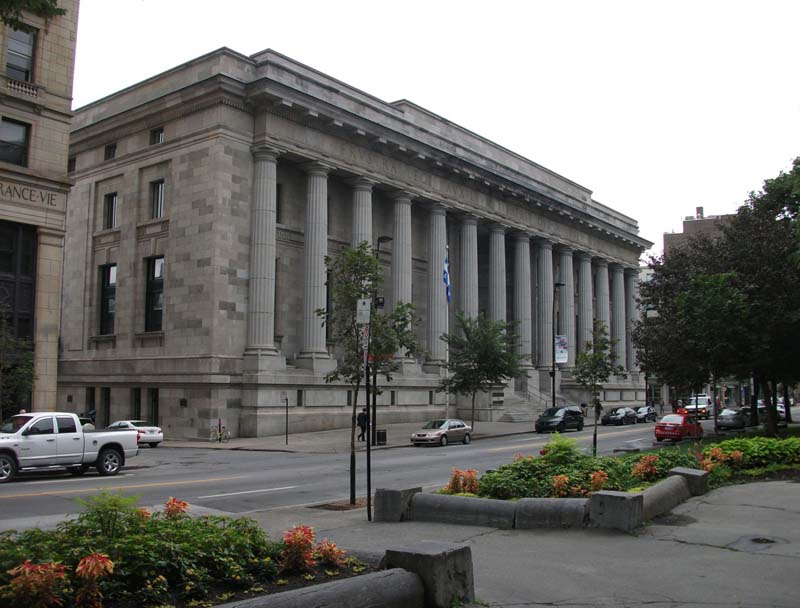
8. MASS Architecture and Design, National Memorial for Peace and Justice, Montgomery, Alabama, 2018. The memorial recognizes the thousands of lynchings that took place in the United States. Photograph by Dell Upton, 2020.
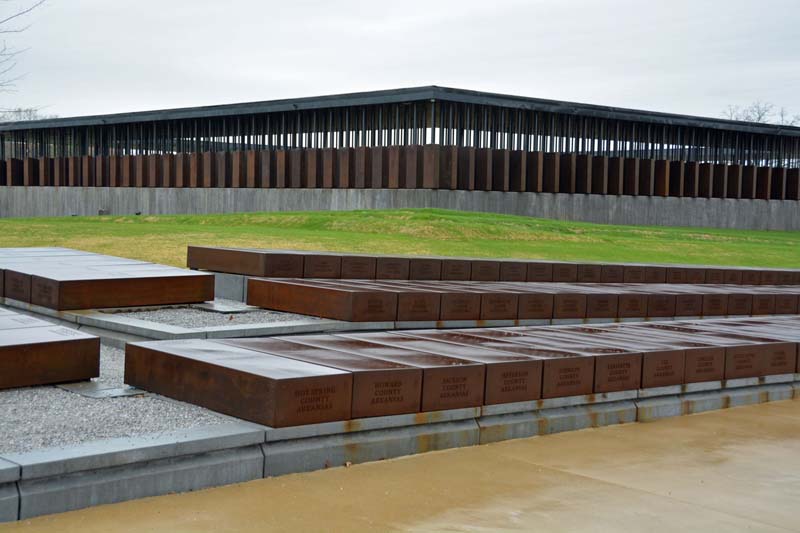
9. Phra Sarocharattanimmaan (Saroch Sukkayang), Supreme Court, Ministry of Justice complex, Bangkok, Thailand, 1941-63. The columns represent the six ideals of the People’s Party: independence, safety, economy, equality, freedom and education. The impetus for the construction of the Ministry of Justice complex was the repeal of extraterritoriality laws in 1939. Photograph by Lawrence Chua, 2012.
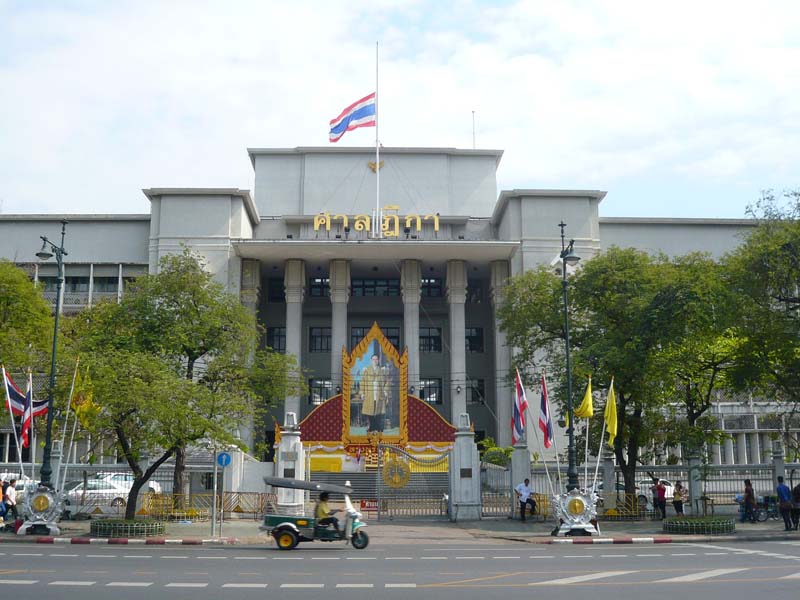
10. Frank Lloyd Wright, Hall of Justice, Interior atrium, Marin County Civic Center, San Rafael, California, 1966-69. The Civic Center was Wright’s largest, and last, public commission, and was completed after his death. Photograph by G.E. Kidder Smith.
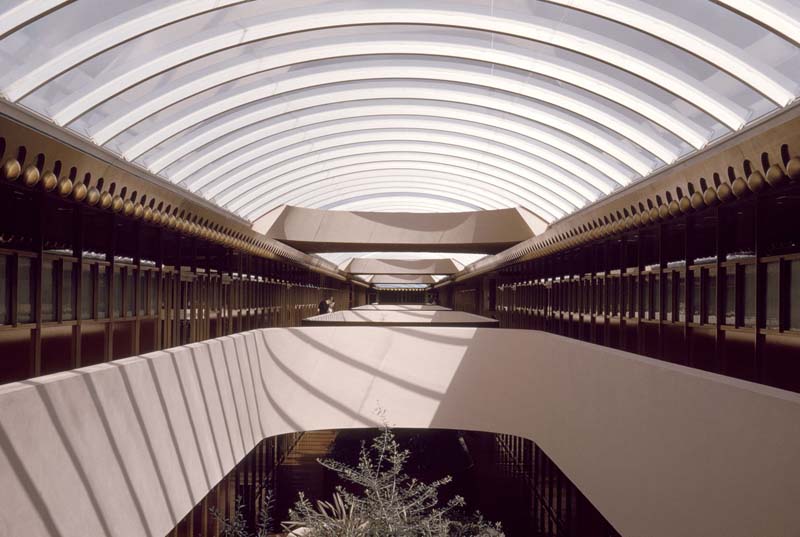
11. Oscar Niemeyer (architect) and Alfredo Ceschiatti (artist), Tribunal Supremo Federal (Federal Supreme Court) with A Justiça (Justice) in foreground, Brasilia, Brazil, post-1956. Photograph by Lisa D. Schrenk, 2007.
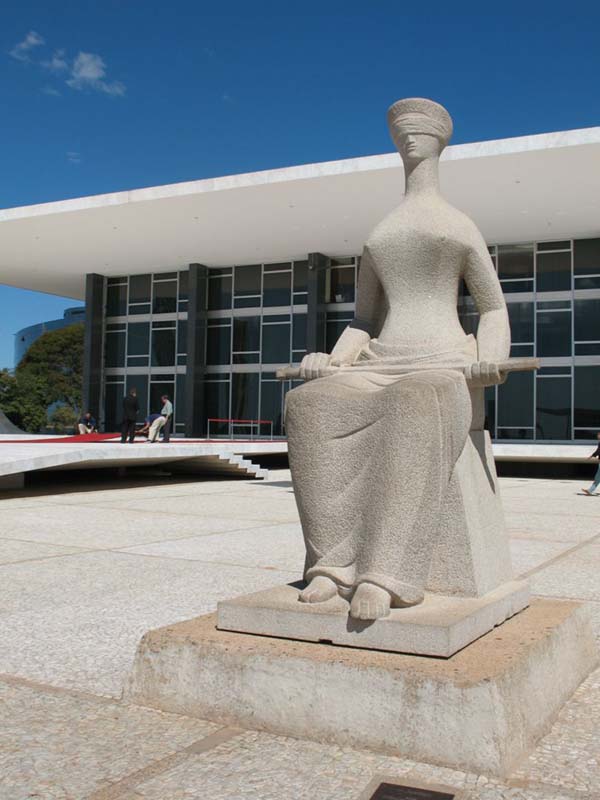
12. Cass Gilbert, United States Supreme Court Building, Washington, D.C., 1932-35. View of the casket of Justice Ruth Bader Ginsburg resting in the portico. Photograph by Dell Upton, 2020.
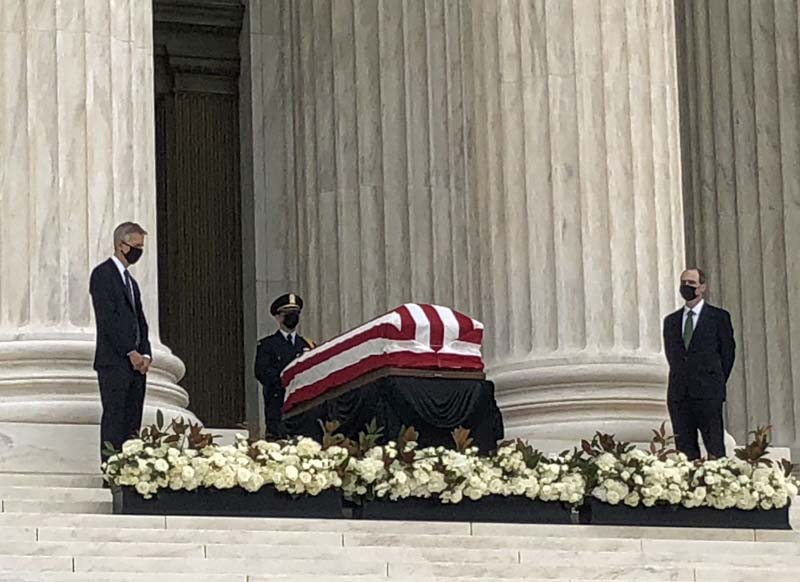
Row White
Lorem ipsum dolor sit amet, consectetur adipiscing elit, sed do eiusmod tempor incididunt ut labore et dolore magna aliqua. Ut enim ad minim veniam, quis nostrud exercitation ullamco laboris nisi ut aliquip ex ea commodo consequat. Duis aute irure dolor in reprehenderit in voluptate velit esse cillum dolore eu fugiat nulla pariatur. Excepteur sint occaecat cupidatat non proident, sunt in culpa qui officia deserunt mollit anim id est laborum.
Row BG Green
Lorem ipsum dolor sit amet, consectetur adipiscing elit, sed do eiusmod tempor incididunt ut labore et dolore magna aliqua. Ut enim ad minim veniam, quis nostrud exercitation ullamco laboris nisi ut aliquip ex ea commodo consequat. Duis aute irure dolor in reprehenderit in voluptate velit esse cillum dolore eu fugiat nulla pariatur. Excepteur sint occaecat cupidatat non proident, sunt in culpa qui officia deserunt mollit anim id est laborum.
Row Gray
Lorem ipsum dolor sit amet, consectetur adipiscing elit, sed do eiusmod tempor incididunt ut labore et dolore magna aliqua. Ut enim ad minim veniam, quis nostrud exercitation ullamco laboris nisi ut aliquip ex ea commodo consequat. Duis aute irure dolor in reprehenderit in voluptate velit esse cillum dolore eu fugiat nulla pariatur. Excepteur sint occaecat cupidatat non proident, sunt in culpa qui officia deserunt mollit anim id est laborum.
Row Green
Lorem ipsum dolor sit amet, consectetur adipiscing elit, sed do eiusmod tempor incididunt ut labore et dolore magna aliqua. Ut enim ad minim veniam, quis nostrud exercitation ullamco laboris nisi ut aliquip ex ea commodo consequat. Duis aute irure dolor in reprehenderit in voluptate velit esse cillum dolore eu fugiat nulla pariatur. Excepteur sint occaecat cupidatat non proident, sunt in culpa qui officia deserunt mollit anim id est laborum.
Row CP Dark
Lorem ipsum dolor sit amet, consectetur adipiscing elit, sed do eiusmod tempor incididunt ut labore et dolore magna aliqua. Ut enim ad minim veniam, quis nostrud exercitation ullamco laboris nisi ut aliquip ex ea commodo consequat. Duis aute irure dolor in reprehenderit in voluptate velit esse cillum dolore eu fugiat nulla pariatur. Excepteur sint occaecat cupidatat non proident, sunt in culpa qui officia deserunt mollit anim id est laborum.
Heading 1
Lorem ipsum dolor sit amet, consectetur adipiscing elit, sed do eiusmod tempor incididunt ut labore et dolore magna aliqua. Ut enim ad minim veniam, quis nostrud exercitation ullamco laboris nisi ut aliquip ex ea commodo consequat. Duis aute irure dolor in reprehenderit in voluptate velit esse cillum dolore eu fugiat nulla pariatur. Excepteur sint occaecat cupidatat non proident, sunt in culpa qui officia deserunt mollit anim id est laborum.
Heading 2
Lorem ipsum dolor sit amet, consectetur adipiscing elit, sed do eiusmod tempor incididunt ut labore et dolore magna aliqua. Ut enim ad minim veniam, quis nostrud exercitation ullamco laboris nisi ut aliquip ex ea commodo consequat. Duis aute irure dolor in reprehenderit in voluptate velit esse cillum dolore eu fugiat nulla pariatur. Excepteur sint occaecat cupidatat non proident, sunt in culpa qui officia deserunt mollit anim id est laborum.
Heading 3
Lorem ipsum dolor sit amet, consectetur adipiscing elit, sed do eiusmod tempor incididunt ut labore et dolore magna aliqua. Ut enim ad minim veniam, quis nostrud exercitation ullamco laboris nisi ut aliquip ex ea commodo consequat. Duis aute irure dolor in reprehenderit in voluptate velit esse cillum dolore eu fugiat nulla pariatur. Excepteur sint occaecat cupidatat non proident, sunt in culpa qui officia deserunt mollit anim id est laborum.
Heading 4
Lorem ipsum dolor sit amet, consectetur adipiscing elit, sed do eiusmod tempor incididunt ut labore et dolore magna aliqua. Ut enim ad minim veniam, quis nostrud exercitation ullamco laboris nisi ut aliquip ex ea commodo consequat. Duis aute irure dolor in reprehenderit in voluptate velit esse cillum dolore eu fugiat nulla pariatur. Excepteur sint occaecat cupidatat non proident, sunt in culpa qui officia deserunt mollit anim id est laborum.
Heading 5
Lorem ipsum dolor sit amet, consectetur adipiscing elit, sed do eiusmod tempor incididunt ut labore et dolore magna aliqua. Ut enim ad minim veniam, quis nostrud exercitation ullamco laboris nisi ut aliquip ex ea commodo consequat. Duis aute irure dolor in reprehenderit in voluptate velit esse cillum dolore eu fugiat nulla pariatur. Excepteur sint occaecat cupidatat non proident, sunt in culpa qui officia deserunt mollit anim id est laborum.
Heading 6
Lorem ipsum dolor sit amet, consectetur adipiscing elit, sed do eiusmod tempor incididunt ut labore et dolore magna aliqua. Ut enim ad minim veniam, quis nostrud exercitation ullamco laboris nisi ut aliquip ex ea commodo consequat. Duis aute irure dolor in reprehenderit in voluptate velit esse cillum dolore eu fugiat nulla pariatur. Excepteur sint occaecat cupidatat non proident, sunt in culpa qui officia deserunt mollit anim id est laborum.
lead
Blockquote: Lorem ipsum dolor sit amet, consectetur adipiscing elit, sed do eiusmod tempor incididunt ut labore et dolore magna aliqua. Ut enim ad minim veniam, quis nostrud exercitation ullamco laboris nisi ut aliquip ex ea commodo consequat. Duis aute irure dolor in reprehenderit in voluptate velit esse cillum dolore eu fugiat nulla pariatur. Excepteur sint occaecat cupidatat non proident, sunt in culpa qui officia deserunt mollit anim id est laborum.
- List Item
- List Item
- List Item
- List Item
- List Item
- List Item
Two Buttons in one paragraph
Expandable List
At the center of SAH Celebrates is the Charnley-Persky House (1891–1892), a National Historic Landmark and a Chicago Landmark designed by Louis Sullivan with assistance from Frank Lloyd Wright, that serves as SAH headquarters. SAH Celebrates highlights the importance of fostering a supportive community whose efforts ensure the stewardship of architectural gems like the Charnley-Persky House.
Proceeds benefit the ongoing maintenance and care of the Charnley-Persky House and SAH's educational programs and publications, including SAH Archipedia and Buildings of the United States.
T. Gunny Harboe, FAIA
Founder, Harboe Architects
Michelangelo Sabatino, PhD
Professor, Director of Ph.D. Program in Architecture, Inaugural John Vinci Distinguished Research Fellow, Illinois Institute of Technology
Founder, Harboe Architects
Michelangelo Sabatino, PhD
Professor, Director of Ph.D. Program in Architecture, Inaugural John Vinci Distinguished Research Fellow, Illinois Institute of Technology
Laurence O. Booth, FAIA
Booth Hansen Architects
Rebekah Coffman
Chicago History Museum
Stuart Cohen, FAIA
Cohen-Hacker Architects
Thomas M. Dietz
Alison Fisher
Art Institute of Chicago
Scott Fortman
Institute of Classical Architecture and Art, Chicago-Midwest Chapter
Keith Goad
The Keith Goad Group, Berkshire Hathaway Home Services Chicago
Chandra Goldsmith
IIT CoA Board of Advisors
Barbara Gordon
Frank Lloyd Wright Building Conservancy
Eleanor Gorski
Chicago Architecture Center
Stuart Graff
Frank Lloyd Wright Foundation
Julie Hacker, FAIA
Cohen-Hacker Architects
Sarah Herda
Graham Foundation
Harry Hunderman, FAIA
Wiss, Janney, Elstner Associates, Inc
Lisa Key
Driehaus Museum
Nancy and Thomas Klein
SAH Chicago Chapter
Thomas Leslie
University of Illinois at Urbana-Champaign
Jen Masengarb
AIA Chicago
Bonnie McDonald
Landmarks Illinois
Justin Miller
Docomomo US/Chicago
Ward Miller
Preservation Chicago
Heather Hyde Minor
University of Notre Dame
Keith N. Morgan, FSAH
SAH Past President
Sarah Rogers Morris
University of Illinois at Chicago
John K. Notz Jr.
SAH Benefactor Member
Keith Olsen
Olsen Vranas Architects
Abby Persky
Chicago, IL
Laurie Petersen
Charnley-Persky House Board Member
Charlie Pipal
School of the Art Institute of Chicago
Deborah Slaton
Wiss, Janney, Elstner Assocites, Inc.
Cynthia Vranas
Mies Van der Rohe Society
Cynthia Weese, FAIA
Weese, Langley, Weese Architects and Charnley-Persky House Board Member
Ernie Wong
Commission on Chicago Landmarks
Booth Hansen Architects
Rebekah Coffman
Chicago History Museum
Stuart Cohen, FAIA
Cohen-Hacker Architects
Thomas M. Dietz
Jaeger Nickola Kuhlman & Associates
Art Institute of Chicago
Scott Fortman
Institute of Classical Architecture and Art, Chicago-Midwest Chapter
Keith Goad
The Keith Goad Group, Berkshire Hathaway Home Services Chicago
Chandra Goldsmith
IIT CoA Board of Advisors
Barbara Gordon
Frank Lloyd Wright Building Conservancy
Eleanor Gorski
Chicago Architecture Center
Stuart Graff
Frank Lloyd Wright Foundation
Julie Hacker, FAIA
Cohen-Hacker Architects
Sarah Herda
Graham Foundation
Harry Hunderman, FAIA
Wiss, Janney, Elstner Associates, Inc
Lisa Key
Driehaus Museum
Nancy and Thomas Klein
SAH Chicago Chapter
Thomas Leslie
University of Illinois at Urbana-Champaign
Jen Masengarb
AIA Chicago
Bonnie McDonald
Landmarks Illinois
Justin Miller
Docomomo US/Chicago
Ward Miller
Preservation Chicago
Heather Hyde Minor
University of Notre Dame
Keith N. Morgan, FSAH
SAH Past President
Sarah Rogers Morris
University of Illinois at Chicago
John K. Notz Jr.
SAH Benefactor Member
Keith Olsen
Olsen Vranas Architects
Abby Persky
Chicago, IL
Laurie Petersen
Charnley-Persky House Board Member
Charlie Pipal
School of the Art Institute of Chicago
Deborah Slaton
Wiss, Janney, Elstner Assocites, Inc.
Chris-Annmarie Spencer, AIA, NOMA
AIA Chicago Foundation
Cynthia Vranas
Mies Van der Rohe Society
Cynthia Weese, FAIA
Weese, Langley, Weese Architects and Charnley-Persky House Board Member
Ernie Wong
Commission on Chicago Landmarks
Download the prospectus for information about sponsorship and advertising opportunities. Please contact Ben Thomas at 312-573-1365 if you have questions.
Category Dropdown
OOTB Cards
Card
Card.Alt

Card Title
Card Text - Lorem ipsum dolor sit amet, consectetur adipiscing elit, sed do eiusmod tempor incididunt ut labore et dolore magna aliqua.

Card Title
Card Text - Lorem ipsum dolor sit amet, consectetur adipiscing elit, sed do eiusmod tempor incididunt ut labore et dolore magna aliqua.

Card Title
Card Text - Lorem ipsum dolor sit amet, consectetur adipiscing elit, sed do eiusmod tempor incididunt ut labore et dolore magna aliqua.
Card.Simple

Card Title
Card Text - Lorem ipsum dolor sit amet, consectetur adipiscing elit, sed do eiusmod tempor incididunt ut labore et dolore magna aliqua.
Card.Hero
Card Title
Card Text - Lorem ipsum dolor sit amet, consectetur adipiscing elit, sed do eiusmod tempor incididunt ut labore et dolore magna aliqua.

Card Title
Card Text - Lorem ipsum dolor sit amet, consectetur adipiscing elit, sed do eiusmod tempor incididunt ut labore et dolore magna aliqua.
Card Title
Card Text - Lorem ipsum dolor sit amet, consectetur adipiscing elit, sed do eiusmod tempor incididunt ut labore et dolore magna aliqua.

Card Title
Card Text - Lorem ipsum dolor sit amet, consectetur adipiscing elit, sed do eiusmod tempor incididunt ut labore et dolore magna aliqua.
Card ButtonCustom Cards
List.Custom Card
List.Custom Card 2 Column
List.Custom Card 3 Column
List.Custom Card 4 Column
Detail.Card
Detail.Card Alt
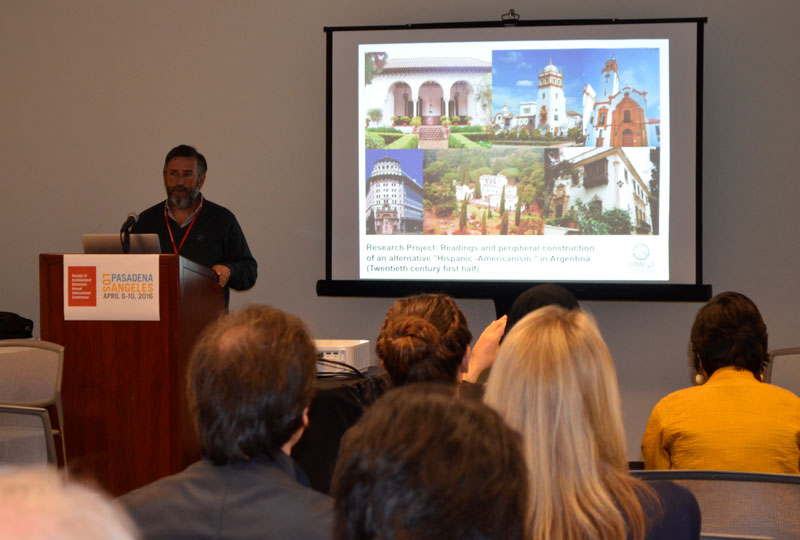
Annual Conference Fellowships
Conference fellowships support session chairs and speakers participating in the SAH Annual International Conference.
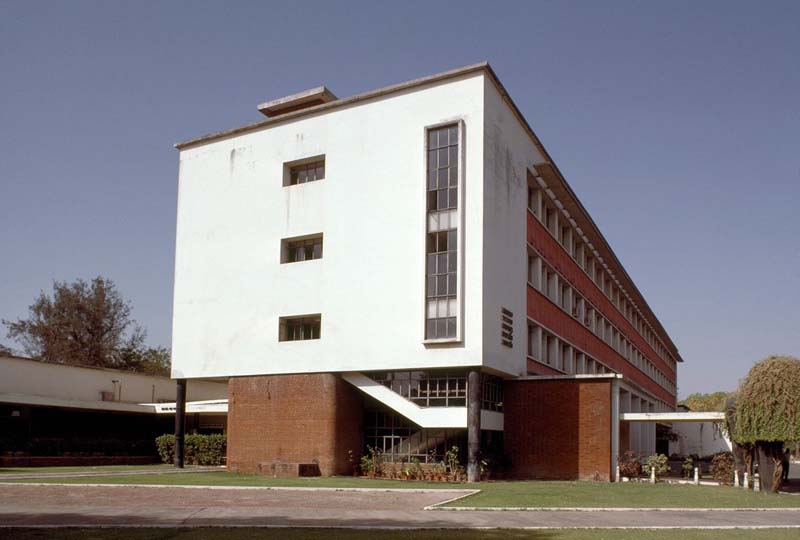

Detail.Card Simple
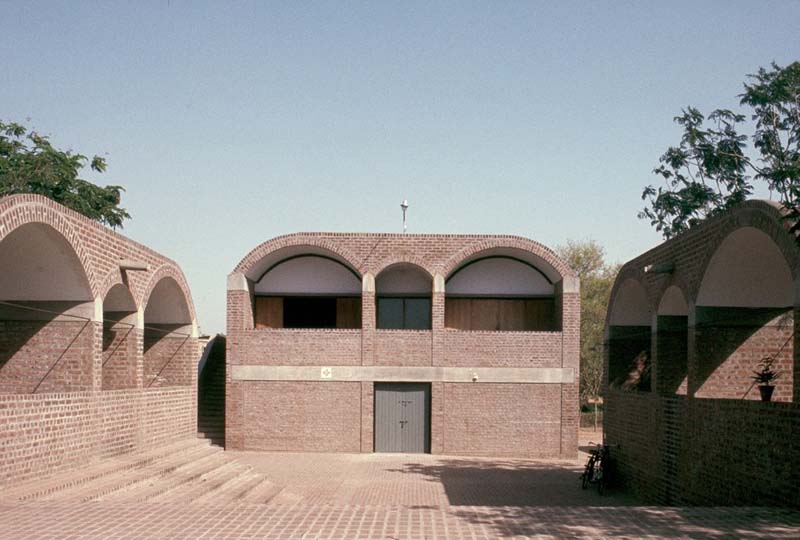
Another Card Title With Extra Text
This is a card summary. Has a limit of 255 characters. We can increase that if you think we need more text.
Detail.Card Hero


Content Types
Blogs
Blog List
Events
Events List
Events Home Blocks
News
News List
SAHARA Highlights: Justice
Jan 23, 2025
by
SAHARA Co-Editors Jacqueline Spafford, Jeannine Keefer and Associate Editor Meral Ekincioglu
It seems timely to look at the architecture of justice, with the rule of law under threat in many parts of the world. From the imposing facades of 19th and early 20th century high court buildings, to the elegance of Niemeyer and Le Corbusier’s Palaces of Justice, to the simplicity of the personifications of Justice, these selections from the SAHARA collections illustrate the breadth of content, and the research interests of our members.
1. Oscar Niemeyer, Tribunal Supremo Federal (Federal Supreme Court), Brasilia, Brazil, 1972. Photograph by Doriane Meyer, 2018.

2. Jeanne Gang / Gang Architects, Arcus Center for Social Justice, Kalamazoo College, Kalamazoo, Michigan, 2014. Photograph by Dell Upton, 2015.

3. George Edmund Street et al, Royal Courts of Justice, London, England, 1868-82. A prime example of the decorative English Gothic style. Photograph by Richard Longstreth.

4. Palace of Justice, Damascus, Syria, 1850 (last renovation). Partially built on Ottoman-era structures, it housed the Ottoman army. Photograph by Nasser Rabbat.

5. William LaBarthe Steel, with Purcell and Elmslie, Woodbury County Courthouse, Sioux City, Iowa, 1916-18. The interior of the Prairie-style building is decorated with murals by John Warner Norton; the one shown here is a tribute to the fallen soldiers of WWI. Photograph by Jean France, 2000.

6. Le Corbusier, High Court of Justice, Chandigarh, India, 1952-56. Photograph by G.E. Kidder Smith.

7. Louis-Auguste Amos, Charles Jewett Saxe, and Ernest Cormier, Édifice Ernest-Cormier, Montreal, Quebec, 1920-26. Photograph by Aliki Economides, 2010.

8. MASS Architecture and Design, National Memorial for Peace and Justice, Montgomery, Alabama, 2018. The memorial recognizes the thousands of lynchings that took place in the United States. Photograph by Dell Upton, 2020.

9. Phra Sarocharattanimmaan (Saroch Sukkayang), Supreme Court, Ministry of Justice complex, Bangkok, Thailand, 1941-63. The columns represent the six ideals of the People’s Party: independence, safety, economy, equality, freedom and education. The impetus for the construction of the Ministry of Justice complex was the repeal of extraterritoriality laws in 1939. Photograph by Lawrence Chua, 2012.

10. Frank Lloyd Wright, Hall of Justice, Interior atrium, Marin County Civic Center, San Rafael, California, 1966-69. The Civic Center was Wright’s largest, and last, public commission, and was completed after his death. Photograph by G.E. Kidder Smith.

11. Oscar Niemeyer (architect) and Alfredo Ceschiatti (artist), Tribunal Supremo Federal (Federal Supreme Court) with A Justiça (Justice) in foreground, Brasilia, Brazil, post-1956. Photograph by Lisa D. Schrenk, 2007.

12. Cass Gilbert, United States Supreme Court Building, Washington, D.C., 1932-35. View of the casket of Justice Ruth Bader Ginsburg resting in the portico. Photograph by Dell Upton, 2020.

News Home Blocks
SAHARA Highlights: Justice
Jan 23, 2025
by
SAHARA Co-Editors Jacqueline Spafford, Jeannine Keefer and Associate Editor Meral Ekincioglu
It seems timely to look at the architecture of justice, with the rule of law under threat in many parts of the world. From the imposing facades of 19th and early 20th century high court buildings, to the elegance of Niemeyer and Le Corbusier’s Palaces of Justice, to the simplicity of the personifications of Justice, these selections from the SAHARA collections illustrate the breadth of content, and the research interests of our members.
1. Oscar Niemeyer, Tribunal Supremo Federal (Federal Supreme Court), Brasilia, Brazil, 1972. Photograph by Doriane Meyer, 2018.

2. Jeanne Gang / Gang Architects, Arcus Center for Social Justice, Kalamazoo College, Kalamazoo, Michigan, 2014. Photograph by Dell Upton, 2015.

3. George Edmund Street et al, Royal Courts of Justice, London, England, 1868-82. A prime example of the decorative English Gothic style. Photograph by Richard Longstreth.

4. Palace of Justice, Damascus, Syria, 1850 (last renovation). Partially built on Ottoman-era structures, it housed the Ottoman army. Photograph by Nasser Rabbat.

5. William LaBarthe Steel, with Purcell and Elmslie, Woodbury County Courthouse, Sioux City, Iowa, 1916-18. The interior of the Prairie-style building is decorated with murals by John Warner Norton; the one shown here is a tribute to the fallen soldiers of WWI. Photograph by Jean France, 2000.

6. Le Corbusier, High Court of Justice, Chandigarh, India, 1952-56. Photograph by G.E. Kidder Smith.

7. Louis-Auguste Amos, Charles Jewett Saxe, and Ernest Cormier, Édifice Ernest-Cormier, Montreal, Quebec, 1920-26. Photograph by Aliki Economides, 2010.

8. MASS Architecture and Design, National Memorial for Peace and Justice, Montgomery, Alabama, 2018. The memorial recognizes the thousands of lynchings that took place in the United States. Photograph by Dell Upton, 2020.

9. Phra Sarocharattanimmaan (Saroch Sukkayang), Supreme Court, Ministry of Justice complex, Bangkok, Thailand, 1941-63. The columns represent the six ideals of the People’s Party: independence, safety, economy, equality, freedom and education. The impetus for the construction of the Ministry of Justice complex was the repeal of extraterritoriality laws in 1939. Photograph by Lawrence Chua, 2012.

10. Frank Lloyd Wright, Hall of Justice, Interior atrium, Marin County Civic Center, San Rafael, California, 1966-69. The Civic Center was Wright’s largest, and last, public commission, and was completed after his death. Photograph by G.E. Kidder Smith.

11. Oscar Niemeyer (architect) and Alfredo Ceschiatti (artist), Tribunal Supremo Federal (Federal Supreme Court) with A Justiça (Justice) in foreground, Brasilia, Brazil, post-1956. Photograph by Lisa D. Schrenk, 2007.

12. Cass Gilbert, United States Supreme Court Building, Washington, D.C., 1932-35. View of the casket of Justice Ruth Bader Ginsburg resting in the portico. Photograph by Dell Upton, 2020.

